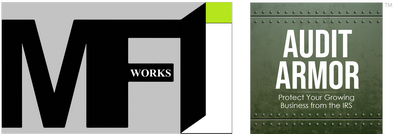
Are you planning on hosting an employee party or recreational event? If you are, you’ll want to ensure that you qualify for 100% employee entertainment tax deductions. If you don’t do things correctly, you may end up producing no deductions at all. This blog will go over how to deduct 100% of your employee recreational activities and parties so that you can benefit from the tax codes in place.
Let’s start by getting an understanding of how these deductions work. Compare the following:
You (the business owner) take Tony, your best customer, to a local country club and treat him to 18 holes of golf. The golf will produce zero deductions. However, if you take your employees and their spouses and children to the local country club to enjoy golf, tennis, swimming, and dinner, the cost of the activities and meals produces a 100% tax deduction.
In this blog, we’ll go over:
- What it takes for an employee party to qualify for 100% tax deduction
- The types of employees that qualify for this 100% deduction
- Tax law’s definition of what type of entertainment is primarily for the benefits of the employees
Deduction for Employees Entertainment
The IRS defines certain types of employee entertainment as 100% tax-deductible:
- Holiday Parties
- Annual Picnics
- Summer Outings
- Maintaining a: swimming pool, golf course, baseball diamond, or bowling alley
These mentioned types of entertainment aren’t the only things that qualify as 100% tax deductions. Tax code states that “expenses for recreational, social, or similar activities primarily for the benefit of employees” qualify for the 100% deduction.
Employees on a Powerboat
Of course, not all of our employee recreational activities fall into the previously mentioned categories. So how can you ensure that your activity qualifies? Here’s an example of the tax court treated a case that was broader in scope than one of a common summer picnic or holiday party:
Horizon Corp rented a powerboat 41 times at a cost of $1k a day for a day of recreational cruises for the employees and their guests. Horizon Corp had around 100 employees, but the boat would only accommodate 30 people at a time. All employees, including owners, managers, and regular employees, were eligible for the cruises. However, they had to sign up for it in advance on a first-come, first-serve basis. The court allowed for the entire $41,000 deduction for the 41 cruises because the recreational events:
- Were principally for the employees
- Did not discriminate in favor of higher ranking/compensated employees
- There was documentation on who went and when
- Passed the “ordinary and necessary” business purpose test
Who Exactly Are These Employees?
There are two categories when it comes to employees. There are the tainted and the untainted. You, the owner, belong to the tainted group. The law requires that the entertainment expenses be mainly for the benefit of employees not in the tainted group. The tainted consist of:
- Highly compensated employees (In 2021, this consists of someone that gets paid more than $130k)
- Any individual that owns at least 10% interest in your business
- Any family member of a 10 percent owner (brothers, sisters, spouses, ancestors, and lineal descendants)
As the owner, remember that you belong to the tired group. It’s not as big a deal as it sounds. Just make sure that partying with employees is primarily for their benefit.

“Primary” Means “More than 50%”
In tax law, the word “primary” basically means more than 50%. For the employee recreation activity, this means that the untainted have to have more than 50% use of the entertainment facility. If the event is a party, more than 50% of the attendees must be from the untainted group. We recommend documenting this data in case proof is needed in the future.
Business Purpose Requirement
As you all may know, the Tax Cuts and Jobs Acts completely eliminated deductions for business entertainment. Luckily, it still remains for entertainment that is primarily for the benefit of employees. However, this still means that you have to satisfy the overriding standard for business expense deductions: the ordinary and necessary business purpose test. But don’t fret! This test is easy to pass!
In simple terms, an ordinary and necessary expense means that the expense you’re incurring is “appropriate and helpful” for your business. So what reasoning could you give? It can be as simple as “to improve employee morale and loyalty” or “to ensure that the business is more fun and has better benefits than the competition.”
Documentation
Your 100% deductible employee entertainment expenses must be documented. Just remember, when recording the expenses for an employee party/outing, be sure to note your business reason for the entertainment. If it’s an annual gathering to enhance employee loyalty and morale, write that down. If you’re hosting a party to celebrate a new big contract, write it down! The point is, a reason is needed for the documentation process, so be prepared to answer the reason for it.
Chart of Accounts
Make sure that you have a category for the 100% deductible employee functions in your chart of accounts. Without a category, you could accidentally put the company picnic in the non-restaurant business meals, thus losing 50% of the deduction when filing your tax return.
Take advantage of the tax code favors your employee outings provide! It’ll grant you 100% tax deductions if done correctly. We hope this blog helped you see how to deduct 100% of your employee recreational activities and parties. At MFI Works, we know these topics can be complicated, so don’t hesitate to contact us if you have any questions. To schedule a free initial business strategy session, click here.


